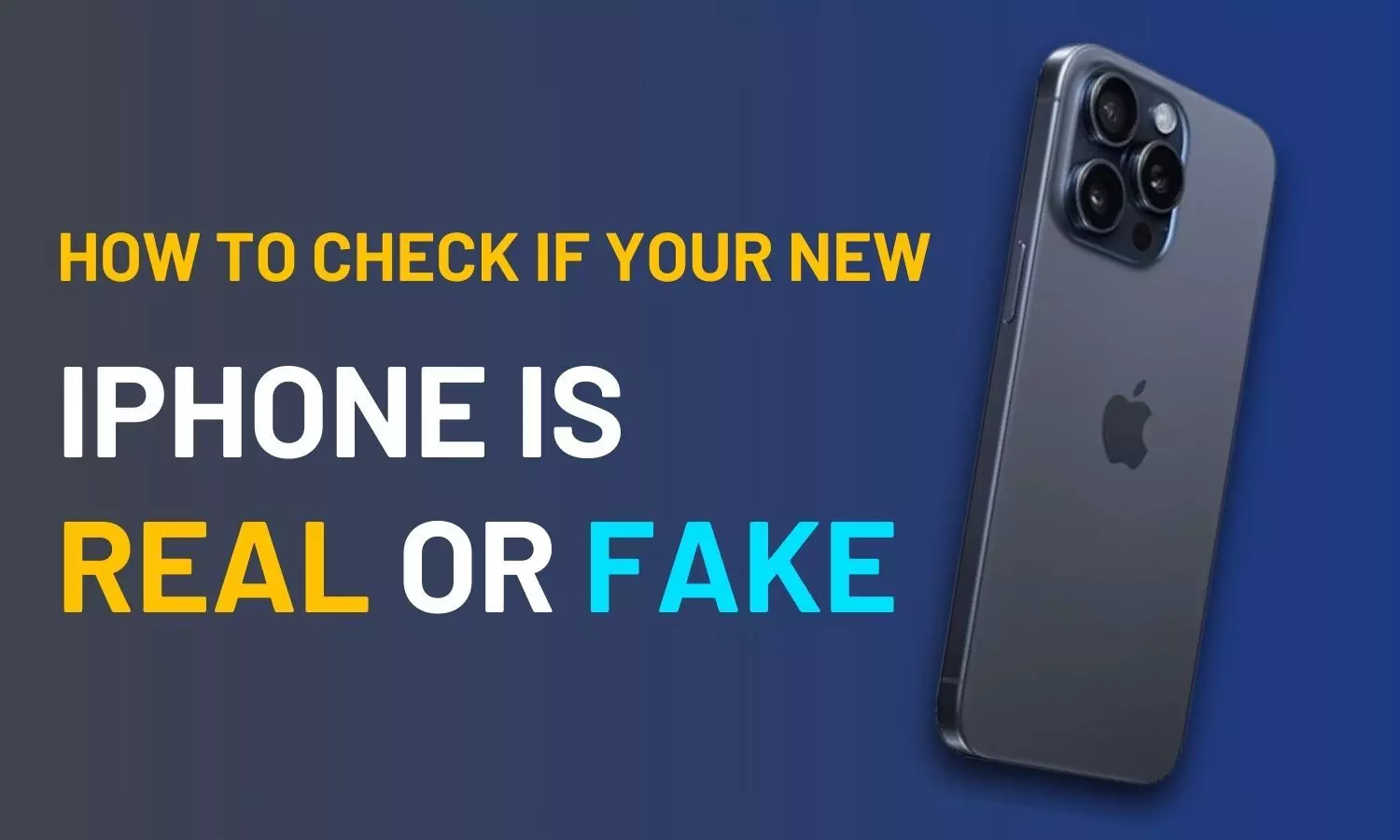How to spot a fake iPhone: A comprehensive guide
Ensure your iPhone is authentic with our detailed guide.
How to spot a fake iPhone: A comprehensive guide

With iPhones ranking among the top-selling smartphones worldwide, their popularity often comes with a downside: a rise in counterfeit models. Apple's flagship devices not only offer advanced features but also serve as status symbols. According to Statista, Apple generated around £39 billion from iPhone sales in the third quarter of 2024.
Unfortunately, this demand has led to an influx of fake iPhones that closely mimic genuine models. This guide will help you verify the authenticity of an iPhone, whether you’re buying a new one, a refurbished model, or simply checking your current device.
Tech expert Melissa Kellermann states that the first step in verifying an iPhone is to examine the packaging and included accessories. Authentic iPhones come in sturdy boxes with high-quality, printing.
Key Points to Consider
1. Packaging and Accessories
2. Serial Number and IMEI Verification
3. Build Quality Assessment
4. Software Examination
5. Professional Consultation
1. Packaging and Accessories
The first step in verifying an iPhone is to examine the packaging and included accessories. Authentic iPhones come in sturdy boxes with high-quality printing. Here’s what to look for:
- Box Quality: Genuine packaging is robust, featuring clear and precise text and images.
- Accessories: Check the quality of accessories like the charging cable and earphones. They should match Apple’s standards in appearance and feel.
- Red Flags: Poor-quality printing, loose packaging, or mismatched accessories could indicate a counterfeit.
2. Serial Number and IMEI Verification
Each iPhone has a unique serial number and International Mobile Equipment Identity (IMEI) number, which you can use to verify its authenticity. To find these numbers:
- Locate the Serial Number: Go to Settings > General > About.
- Check Coverage: Visit Apple’s Check Coverage page and enter the serial number. The site will provide details about your device model, warranty status, and other relevant information.
- IMEI Check: Dial *#06# to display the IMEI number. Cross-reference this with the number printed on the box and the SIM tray. All numbers should match; discrepancies are a warning sign.
3. Build Quality Assessment
Apple is known for its meticulous craftsmanship. When holding a genuine iPhone, it should feel solid and well-constructed. Here’s how to assess build quality:
- Weight and Feel: Authentic iPhones have a premium weight and texture; they should feel sturdy in your hand.
- Button Functionality: Test the buttons to ensure they click firmly and do not feel loose.
- Logo Alignment: Inspect the Apple logo on the back; it should be perfectly aligned and smooth.
- Physical Features: Verify that the screen size, display quality, and overall design match the official specifications. Remove the SIM tray and inspect the slot for any visible flaws or misalignments.
4. Software Examination
The software running on your iPhone is a crucial indicator of its authenticity. Genuine iPhones operate on Apple’s iOS. Here’s how to check:
- Software Update: Go to Settings > General > Software Update. If your device is running the latest iOS version, it’s likely genuine.
- Siri Functionality: Try activating Siri by holding the side button or using “Hey Siri.” If Siri does not respond, your device might be counterfeit.
- User Interface: Be cautious of phones that have a modified Android interface designed to resemble iOS. A genuine iPhone will always maintain Apple’s user experience.
5. Professional Consultation
If you still have doubts after conducting the above checks, your best option is to visit an authorised Apple service centre. Here’s why:
- Expertise: Professionals can perform a comprehensive examination of your device.
- Tools and Resources: Authorised service centres have access to proprietary tools that can definitively confirm your iPhone’s authenticity.
- Peace of Mind: Obtaining a professional opinion ensures that you can confidently use your device without concerns about its legitimacy.
As the market for iPhones continues to grow, so does the risk of counterfeit products. By carefully inspecting the packaging, verifying serial and IMEI numbers, assessing build quality, examining the software, and consulting professionals, you can protect yourself from fraud. This vigilance is especially important during busy sales seasons when counterfeit devices may proliferate. Being informed and proactive will help you ensure that your investment in an iPhone is secure and legitimate, allowing you to enjoy all the features and status that come with owning an authentic Apple device.

